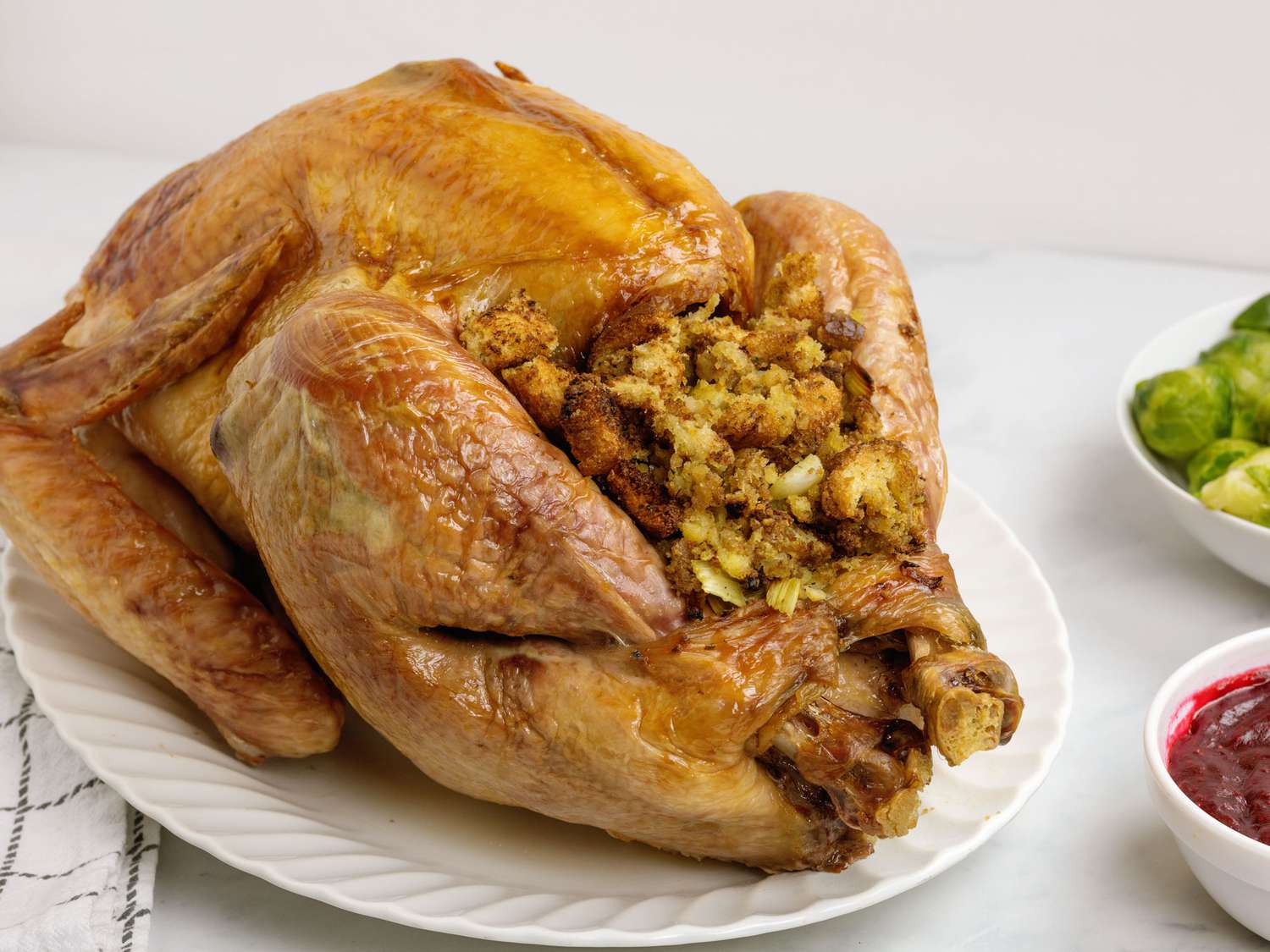Stuffing a turkey is a beloved Thanksgiving tradition that infuses the bird with delicious flavor However, it can seem daunting for first-time turkey stuffers Have no fear – with proper technique and safety precautions, stuffing a turkey is easy. This comprehensive guide breaks down the process into simple, foolproof steps.
Why Stuff a Turkey?
Stuffing a turkey provides several advantages
-
Infuses the turkey meat with the delicious flavors of the stuffing. As the stuffing cooks inside the bird it soaks up all the tasty turkey juices.
-
Frees up oven space. The stuffing cooks right inside the turkey, so you don’t have to bake it separately.
-
Provides built-in side dish. You get moist, flavored stuffing and juicy turkey all from one recipe.
-
Adds dramatic presentation. Carving into a stuffed turkey is an impressive culinary spectacle for your Thanksgiving guests.
Stuffing Ingredients
You can customize your stuffing however you like. Most recipes include a base of bread cubes or stuffing mix combined with sauteed aromatics like celery, onion and herbs. Consider adding:
- Vegetables: Mushrooms, carrots, squash
- Fruits: Apples, cranberries, raisins
- Nuts: Pecans, walnuts, chestnuts
- Meats: Sausage, bacon
- Herbs: Sage, thyme, rosemary
Turkey Stuffing Safety Tips
To safely stuff your turkey, follow these guidelines:
-
Use freshly made stuffing. Don’t stuff the turkey the night before.
-
Keep raw ingredients out of the stuffing. Cook any meat, seafood or vegetables before adding to stuffing.
-
Stuff loosely. Overstuffing can prevent the stuffing from cooking through properly.
-
Cook the stuffing to 165°F. Use a meat thermometer to ensure the center of the stuffing reaches a safe final temperature.
-
Never store cooked stuffing inside a turkey. Remove it promptly before refrigerating leftovers.
Step-by-Step Instructions
Follow these simple steps for foolproof turkey stuffing success:
1. Prepare the Stuffing
Mix your preferred bread cubes, seasonings and aromatics. Moisten with broth, butter, or other liquid as needed. For food safety, prepare the stuffing just before using.
Tip: Heat the stuffing before adding it to the turkey so it starts cooking faster inside the bird.
2. Prepare the Turkey
Remove giblets from the turkey cavities. Rinse the turkey and pat dry. Season the outside of the turkey with salt, pepper or herbs. Rub the skin with oil or butter.
3. Stuff the Turkey
Loosely fill the neck and body cavities of the turkey with stuffing. Pack it lightly – overstuffing can hinder even cooking.
Tip: For more even cooking, put some of the stuffing into a greased baking dish to cook it alongside the turkey.
4. Secure the Openings
Close the neck cavity with skewers or by tying the flap of skin over the opening. Tie the drumsticks together to seal the other cavity.
5. Roast the Turkey
Place turkey breast-side up on a rack in a roasting pan. Roast at 325°F, basting occasionally, until the thighs reach 170°F and the center of the stuffing reaches 165°F.
Tip: Use a probe thermometer with an alarm to monitor the stuffing temperature.
6. Rest, Carve and Serve
Let the cooked turkey rest 20 minutes before carving. Scoop out the piping hot stuffing, carve the turkey, and serve!
Frequently Asked Questions
What if my turkey is too small to stuff?
For smaller birds under 12 pounds, skip stuffing the cavity. Bake your favorite stuffing in a casserole dish alongside the turkey instead.
Can I cook stuffing in the oven instead?
Absolutely! Bake stuffing in a greased baking dish at 375°F until it reaches 165°F, about 30-45 minutes. Cover initially, then uncover at the end to brown.
What’s the best way to reheat leftover turkey and stuffing?
Leftover sliced turkey and stuffing reheat beautifully in a 350°F oven. Cover the turkey, add a splash of broth if needed, and heat for about 30 minutes until warmed through. Reheat stuffing uncovered for 30-40 minutes.
Can I prep the stuffing in advance?
Yes, you can make stuffing 1-2 days ahead. Keep it refrigerated in an airtight container until ready to use. Reheat it before stuffing the turkey so the stuffing doesn’t lower the turkey’s temperature.
What if my turkey is stuffed with aromatics instead of stuffing?
Herbs, onions, carrots and more still infuse the turkey with flavor. Use the cooked aromatics to make a quick gravy or stock after roasting.
Stuffing a turkey infuses it with delicious flavor and provides a convenient side dish – as long as proper technique and food safety guidelines are followed. With this handy guide, you can master the process and enjoy a showstopping stuffed turkey centerpiece this Thanksgiving.

